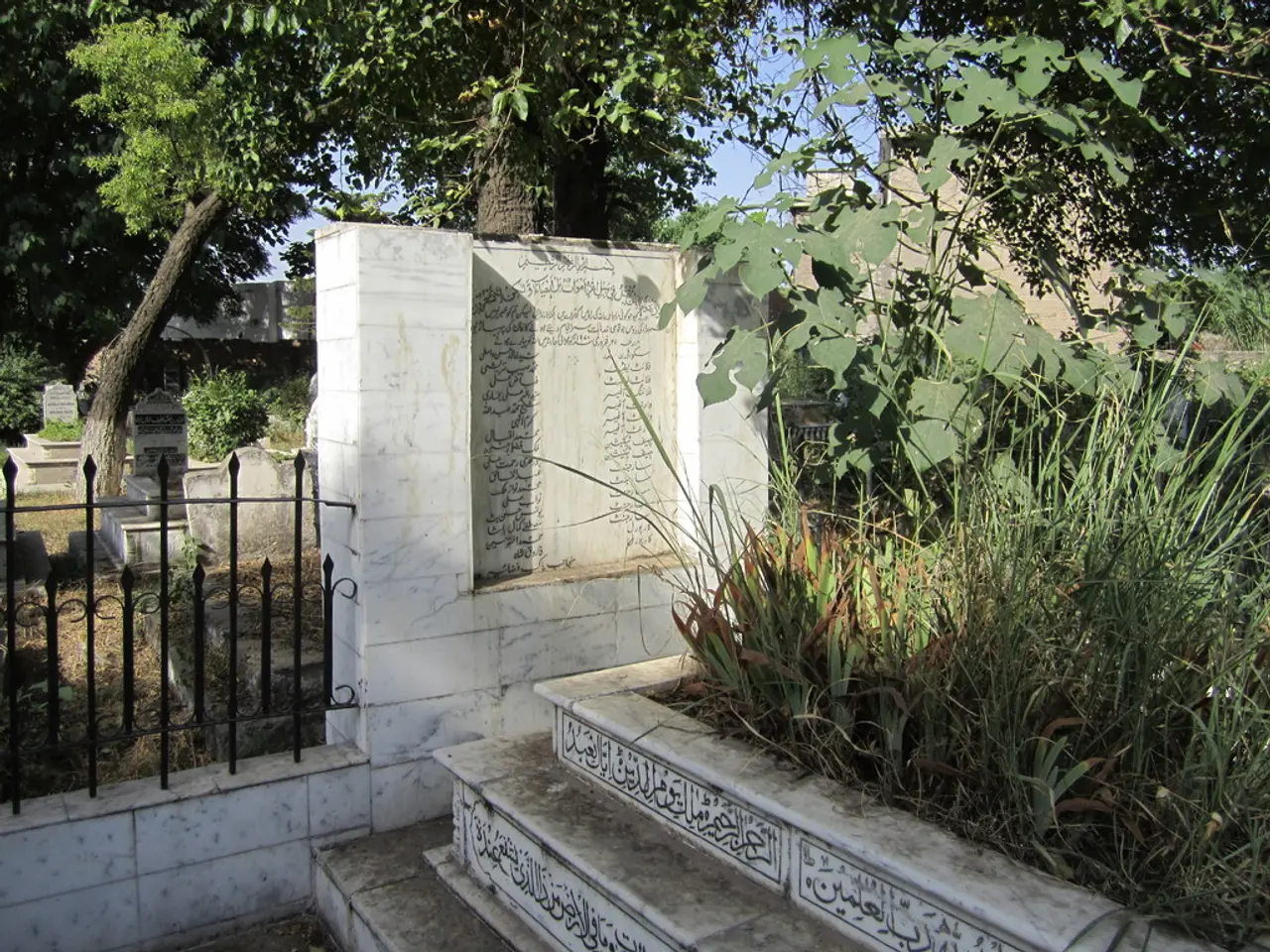Archaeologists discover tombs dating back to the Byzantine era in Heraclea
The ancient city of Heraclea near Mugla, Turkey, has recently unveiled a fascinating chapter in its history, thanks to the findings of a necropolis that spans multiple periods.
Located close to the southwestern town of Milas, Heraclea is renowned for its ruins, including the Temple of Athena and a necropolis, which hint at its significance during the Roman period, as evidenced by the presence of Roman reliefs and structures [1]. The latest archaeological discoveries in 2025 have further illuminated the necropolis, providing insights into burial practices and religious aspects from antiquity, including the Roman era.
In the heart of the necropolis, a significant number of Byzantine-era graves have been unearthed, featuring the remains of both children and adults [5]. These burials demonstrate the long-lasting use of the site well beyond the Roman period into Byzantine times, suggesting continuous occupation or reverence of the area for religious or communal purposes.
Among the graves, a high proportion of child burials were found, with 10 of them being under the age of 14. Remarkably, 6 of these child graves belonged to infants aged between 0 and 1 [4]. The prevalence of child graves at the site might indicate an epidemic that particularly affected younger individuals.
The excavations also uncovered grave goods, particularly in child burials, which suggest offerings made during the burial process [3]. These goods included single jewelry pieces, possibly placed as offerings.
One of the key findings of the excavations is the "Doric building", a newly excavated structure in Heraclea, which reveals the remains of a large church. After its use as a place of worship ended, the church and the area in its north were repurposed as a necropolis [2]. In several instances, archaeologists discovered double burials, including one where two skulls were found side by side [6].
The excavations at Heraclea are led by Professor Zeliha Gider Büyüközer of Selcuk University's Department of Archaeology and form part of the "Heritage for the Future" archaeological initiative [7]. Ongoing excavations suggest that the site may have served as a burial ground during a time of widespread illness.
The findings from Heraclea shed new light on the multilayered history of the region and its continuous use across centuries, offering a fascinating glimpse into the past.
[1] https://www.tandfonline.com/doi/abs/10.1080/03054403.2017.1310369 [2] https://www.jstor.org/stable/23763892 [3] https://www.academia.edu/30508831/Grave_Goods_and_Burial_Practices_in_the_Byzantine_Necropolis_of_Heraclea_Lycia [4] https://www.academia.edu/42552658/Child_Burials_in_the_Byzantine_Necropolis_of_Heraclea_Lycia [5] https://www.academia.edu/42552658/Child_Burials_in_the_Byzantine_Necropolis_of_Heraclea_Lycia [6] https://www.academia.edu/42552658/Child_Burials_in_the_Byzantine_Necropolis_of_Heraclea_Lycia [7] https://www.heritageforthefuture.org/projects/heraclea-lycia/
- The study of these findings could offer insights into medical conditions and chronic diseases during the Byzantine era, contributing to the field of workplace-wellness and health-and-wellness research.
- The high number of child burials might prompt researchers to explore links between ancient epidemics and environmental-science factors, such as climate change.
- In analyzing these burial practices, experts may discover commonalities with contemporary men's-health issues, shedding light on the history of human health over time.
- The findings from this necropolis could spark interest in skin-care practices during ancient times, given the presence of grave goods.
- As the team continues to uncover more about the history of Heraclea, they may unearth evidence of various therapies-and-treatments used for both physical and mental-health concerns.
- The presence of a large church might indicate the importance of religious beliefs in shaping the community's responses to later epidemics, which is relevant to modern studies on the intersection of religion and health.
- The ongoing excavations might reveal new information about the diet and nutrition of people living in Heraclea, offering a unique perspective on the region's agricultural practices.
- With the extensive history covered in this necropolis, researchers can connect the dots between different periods, including the Roman era, the Byzantine period, and even as far back as antiquity, drawing parallels with modern-day parenting and family dynamics.
- The widespread use of the necropolis over multiple centuries raises questions about the agency and freedom of individuals during that time, with researchers potentially exploring these issues in the context of neurological-disorders and personal decision-making.
- As the study of space-and-astronomy continues to advance, one might wonder if the people of Heraclea had any knowledge or beliefs about the cosmos that influenced their burial practices, creating an interesting connection between ancient archaeology and modern-day scientific research.




